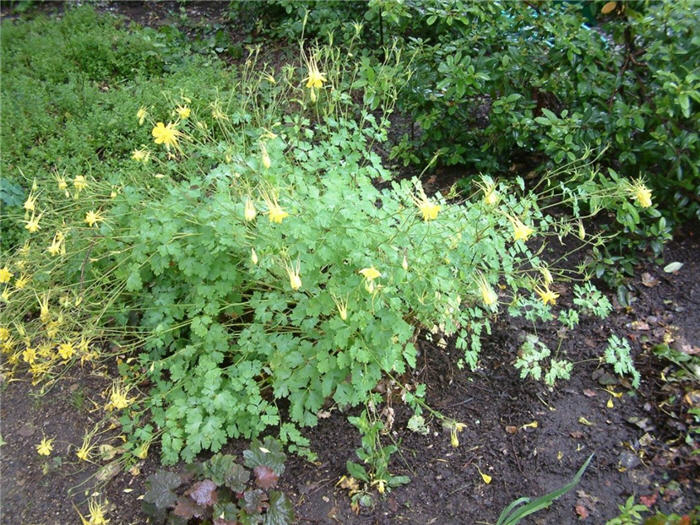| Botanical Name: Aquilegia chrysantha | |
| Common Name: Golden Spur Columbine |

-
Anatomy
-
Culture
-
Design
Plant Type
Perennial
Height Range
1-3'
Flower Color
Yellow
Flower Season
Spring
Leaf Color
Green
Bark Color
n/a
Fruit Color
n/a
Fruit Season
n/a
Sun
Full, Half, Shade
Water
Medium, High
Growth Rate
Moderate
Soil Type
Sandy, Clay, Loam, Rocky, Unparticular
Soil Condition
Average, Rich, Well-drained, Moist, Dry
Soil pH
Acid, Neutral, Basic
Adverse Factors
n/a
Design Styles
English Cottage, Meadow, Ranch, Woodland
Accenting Features
Showy Flowers
Seasonal Interest
Spring
Location Uses
Entry, Perennial Border, Patio, Raised Planter, Walkways, With Rocks
Special Uses
Container, Cut Flowers, Filler, Mass Planting, Naturalizing, Small Spaces
Attracts Wildlife
Hummingbirds
Information by: Stephanie Duer
Photographer: Steve Jacobs/MSN
Photographer: Steve Jacobs/MSN
-
Description
-
Notes
Native to the canyons of the Southwest, this is one of the most widely adapted of all columbines. A vigorous grower, it combines excellent heat tolerance and mildew resistance with a long display of fragrant yellow flowers in late spring. Flowers are a cheery, bright yellow and bloom in late spring, though they will rebloom if deadheaded. Foliage is blue-green and deeply lobed. With flowers, plants stand at about 30 to 36 inches tall and 18 inches wide.
Grow in well drained, loamy soil in full sun to full shade, though will need more water in full sun situations. Deadheading will usually prolong the bloom season, and as they make lovely cut flowers, snip them off and tuck them in a vase while they are still fresh. Generally, columbine go dormant during the hottest part of the summer; they are also usually a short-lived perennial but are generous reseeders if planted where they are content. Hardy to USDA Zone 3. During blooming, they appreciate regular watering, but as they go dormant, reduce the frequency of irrigation.